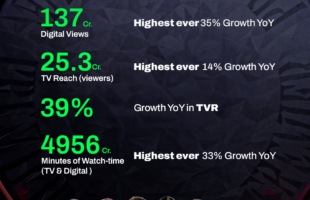This story appears in the December 2020 issue of Television Asia Plus.
Managing change is a core part of the media industry, and as with any sector which relies heavily on technology, there’s usually a natural evolution that occurs over time. This gives organisations the opportunity to test different solutions and slowly integrate them into their operations, but unpredictable changes leave little room for planning in advance.
Managing media during a crisis
When the pandemic hit, the media and broadcasting sector needed to quickly rethink content management. In some cases, organisations already had central repositories located on-premises which staff had remote access to. But these interfaces had never been used on such a large scale before.
The old infrastructure was under a level of pressure it had not been designed to deal with, and teams were challenged by home broadband capacity which was insufficient to cope with their workflows. Other companies struggled to give any access at all to their on-premise storage and were forced to troubleshoot by storing content on external hard-drives. These conditions made organising media and collaborating on content extremely challenging for teams and raised concerns around asset security.
In the early stages of lockdown, long-term remote working wasn’t a consideration. Media companies hadn’t yet projected that the impact of the outbreak would last for the rest of the year. The halting of production meant that all of the focus was on the projects already at a post-production stage. The main aim was to get those finalised with minimal disruption, but as the restrictions dragged on attention turned to cloud media workflows to manage the ongoing situation more effectively.
Smart asset management
Offering more than just remote content access, cloud and hybrid-cloud media management enable teams to consolidate and maximise their assets. The most comprehensive offerings allow customers to store their content anywhere, whether on-premise or in the cloud, and enable access from any location. AI integrations can also auto-tag content frame by frame automatically. Each additional piece of meta-data makes content easier to sort and locate. AI can analyse visual details such as colour, environment, and subject but can go beyond this and identify emotions too.
Post-production teams have had to generate new content from the archive, in order to manage the slow-down in filming and keep up with audience demand. Smart media management has proved to be a vital support for consolidating this footage, utilizing the latest AI functionality which has been specifically built for video content.
Tools such as visual AI Metadata, use object detection, and face recognition to allocate tags to exact timecodes and scenes. The most advanced tools allow for custom training of an AI engine, which can identify specific attributes of an object rather than just a generic description. Audio can also be isolated and using AI-generated transcriptions it can be converted into text and attributed to different speakers.
Isolating specific elements within footage is vital, if every section of the video can be described in detail, finding archive content and extracting clips becomes a job that takes minutes instead of days. This has enabled media companies to explore the possibilities of monetising archives which had been sitting dormant for years. As well as giving teams the visibility needed to manage projects effectively.
Effective video collaboration
Access to assets hasn’t been the only challenge editors have faced, post-production is a creative process that is collaborative in nature. Global teams need to share, edit, review, and approve content from anywhere. The industry has been gradually moving towards remote collaboration around content for some time, but the pandemic created an absolute necessity to fast-track the process.
Working with proxy files reduces bandwidth requirements, and enables editors to work seamlessly within integrated Adobe applications. But the post-production process is a team effort, and companies are now looking at tools that can consolidate all stages of feedback and review in one place.
The future of the content chain
Now that production has restarted, there has been a lot of focus on adapting sets and events for social distancing requirements. However, the logistics of post-production are sometimes overlooked by the wider media industry. It turns out that managing content can often cause more issues than managing people.
Cloud technology has enabled teams to create in new ways and rise above the challenges of the pandemic. The longer-term effects on the industry will be unique because every section of the content chain has been impacted and needs to adapt to new technology collectively. For post-production teams, a combination of the right cloud-based workflows and remote editing tools will allow them to manage their link in the chain effectively. With this in place, creative teams will continue to deliver quality content regardless of what arises in the coming months.
About the author:
Parham is the co-founder and CEO of smart media management company, iconik. Parham has over a decade of experience throughout the entire chain of media management, with previous roles including development, systems architecture, project management, and sales management.








